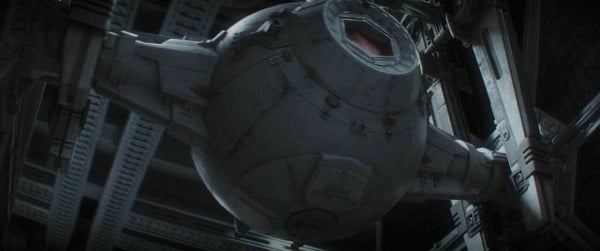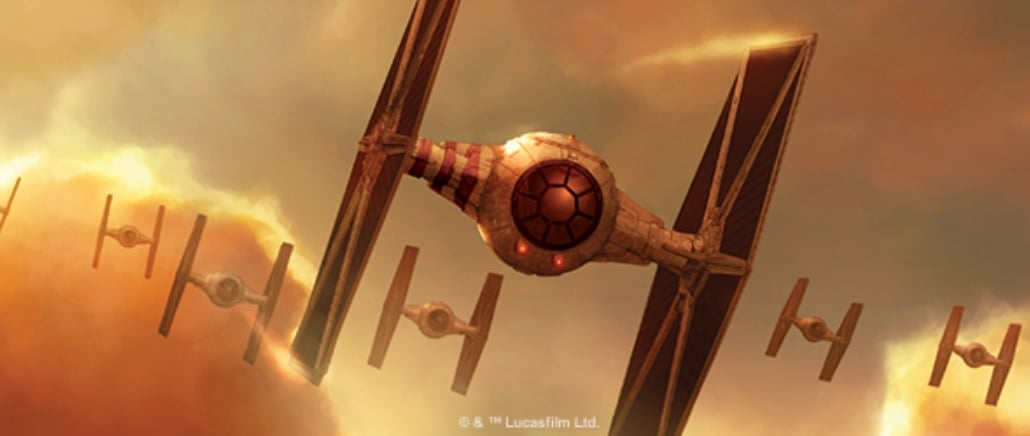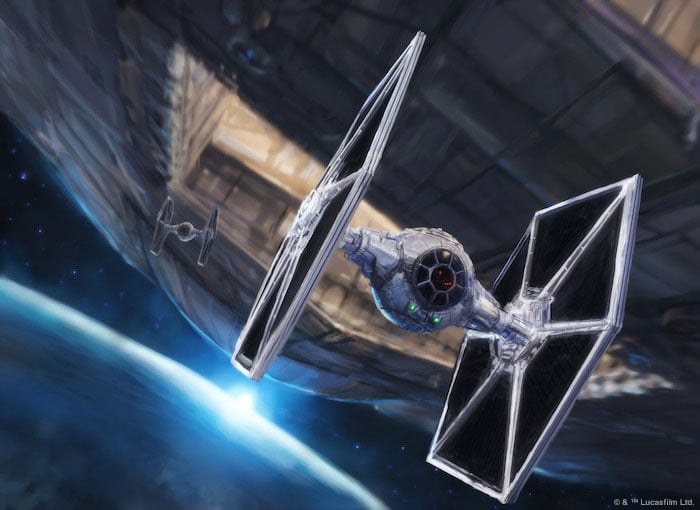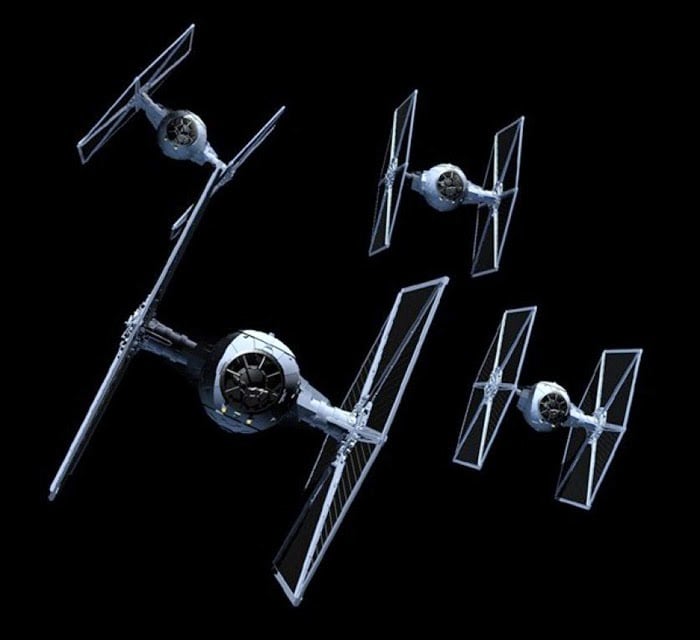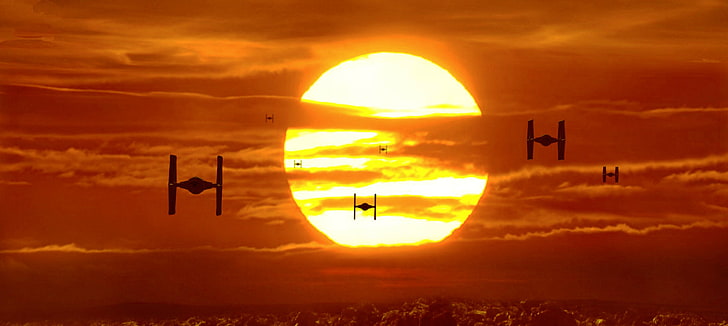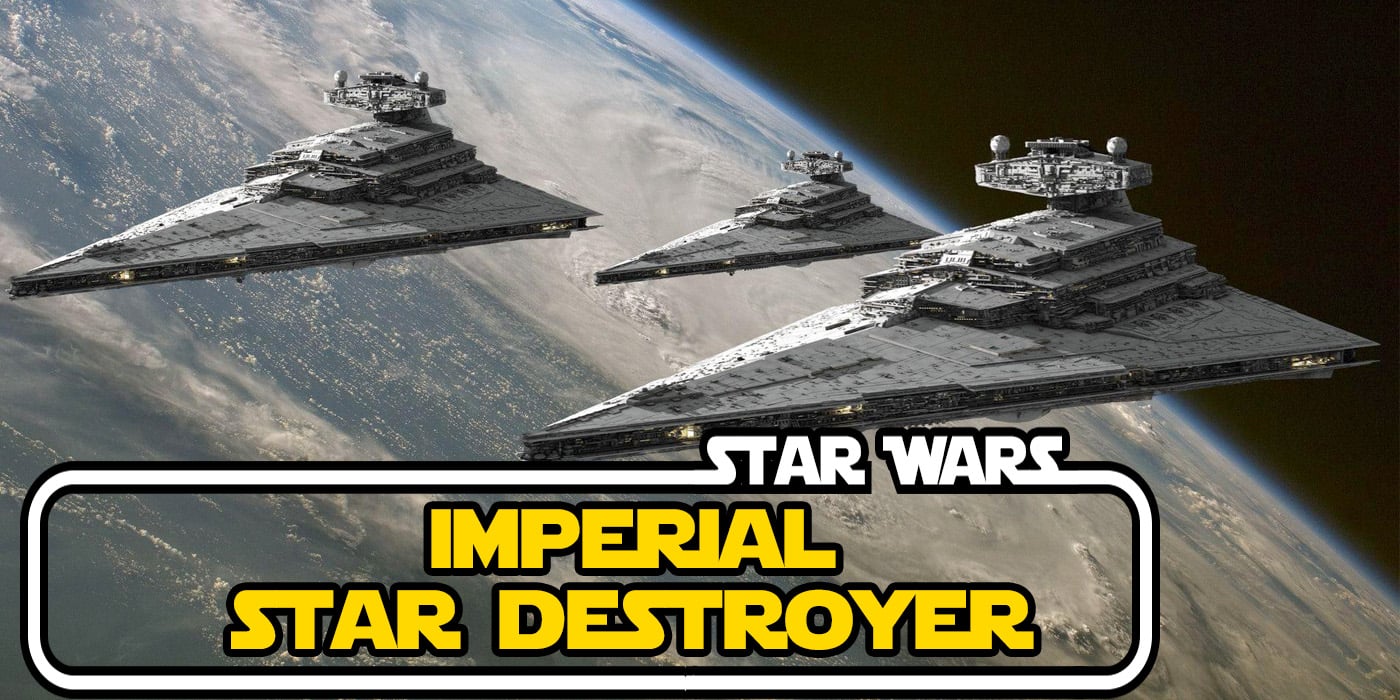Star Wars: Forget X-Wings, This Is The Most Iconic Fighter In Sci-Fi- The TIE Fighter Breakdown
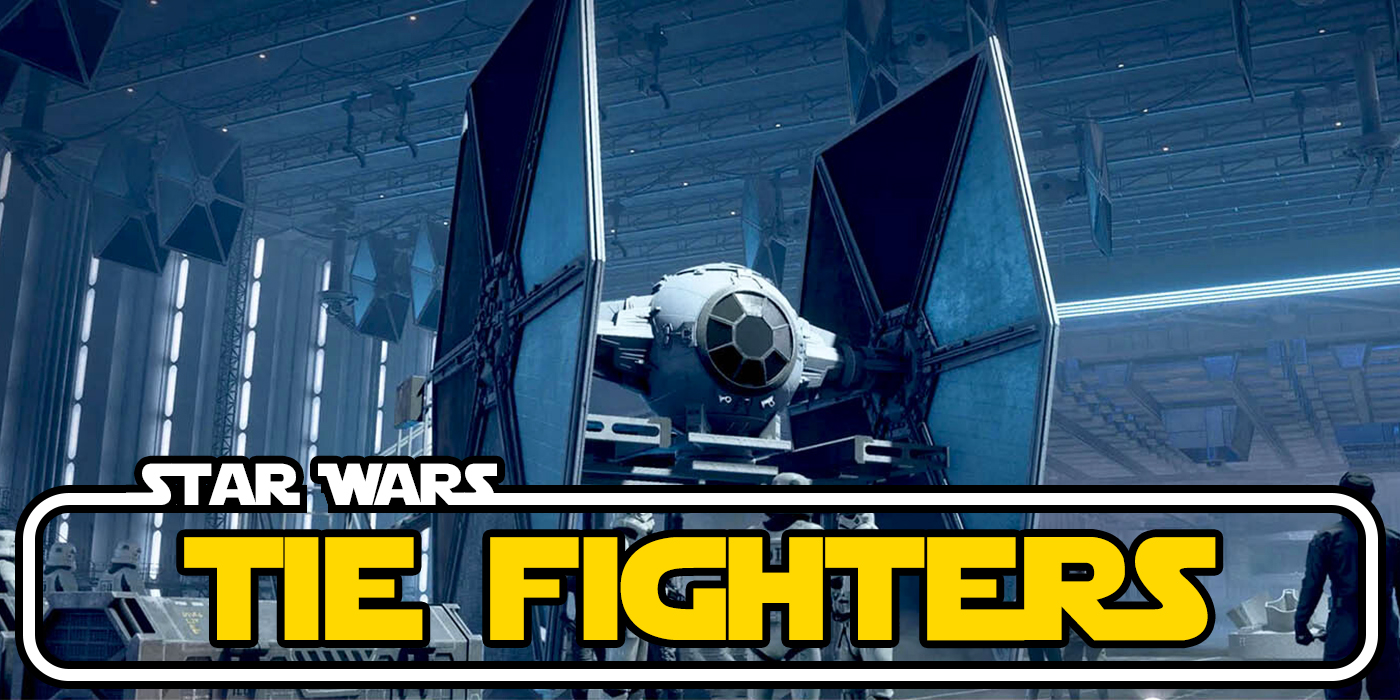
Named for their Twin Ion Engines, the TIE fighter is one of the most iconic and notorious starfighters in the galaxy.
When it comes to the starfighters, nothing embodies the galactic Empire more than a TIE Fighter. These fighters are swift, light, and as deadly to their pilots as they are to their opponents.
The TIE Fighter, as we know it, is one of the most precisely manufactured crafts in the galaxy. But they’re also among the cheapest craft to produce, with the design intended to be as maximally efficient to produce as possible.
History of the TIE Fighter
How did the starfighter synonymous with Imperial power come to be so infamous? It all starts with two figures. Grand Moff Wilhuff Tarkin and Raith Sienar of Sienar Fleet Systems.
The Galactic Republic died to thunderous applause in the chambers of the Galactic Senate. The Empire’s Grand Moff Tarkin commissioned a new line of fighters to help maintain control over Imperial territories.
These new fighters needed to be extremely fast, maneuverable, energy efficient. But above all else, they had to be inexpensive to manufacture.
The TIE fighter was personally designed by the head of Sienar Fleet Systems. The new space superiority fighters were developed from a combination of three other starship designs: the Star Courier, the Alpha-3 Nimbus-class V-wing starfighter, and the Eta-2 Actis-class light interceptor.
From these disparate designs came the iconic TIE/ln Space Superiority Fighter. You can see elements of the contributing ships: the wing structure of the Courier, the shaped cockpit of the Actis, and the wingdesign of the Nimbus, but together these component parts contributed to a much greater whole.
Fighter Pilots’ Survival Chances
In order to minimize costs and maximize maneuverability and firepower, Sienar designed the fighter limited “optional” systems. The TIE fighter has no shields and no hyperdrive. It doesn’t even life support.
TIE pilots consider themselves expendable in the face of a greater objective. They will fly into battle wearing full EVA suits.
Even the most accomplished pilots have a short combat life-expectancy. However, the sheer number of TIE fighters was a quality all its own. And though the spacecraft is cheap, it is still impressive.
TIE Fighter Design
A TIE/ln measured 7.24 meters in length. It has a maximum atmospheric speed of 1,200 kph and a sizable maximum acceleration. That’s thanks to the twin ion engines that give the TIE its name.
With Sienar Fleet Systems P-s3 ion engines, and later the P-s4 model, the TIE/ln proved to be extraordinarily maneuverable. If only short ranged.
Repulsorlift cyclers embedded in the wing struts gave the TIE/ln even more maneuverability as well as VTOL capabilities. The “wings” of the TIE/ln are a complex array of solar collectors with a “micro-crenulated solar absorption surface”. These allow the TIE/ln to recharge cheaply while still outputting enough power to fire its twin L-s1 Laser Cannons.
All survivability in the TIE/ln comes from its maneuverability. The TIE Fighter’s engine has no moving parts, and is vulnerable to a well placed blaster shot.
TIE/ln pilots are expected to survive with their wits, their sensors, and their accuracy. They’re armed with some powerful weapons. If necessary, they could take down other starfighters or medium transports.
Tactics & Legacy
The typical strategy with the TIE/ln is to overwhelm the enemy by attacking in large numbers. You can thank their cheap design for that feature.
A brand-new model cost an estimated 60,000 Imperial Credits. That’s almost a third the price of a T-65b X-wing starfighter. Even a used X-wing still costs almost 10% more than a brand new TIE fighter.
If you can find one used, you’ll pick up your new deathtrap for a scant 25,000 Imperial Credits.
These delicate fighters expendable assets. Thanks to their training, pilots consider themselves expendable, too. No wonder TIE pilots have a reputation for being recklessly daring.
But the great strength of the TIE is in its overwhelming numbers.
The TIE Fighter went through a series of innovations after the Battle of Yavin. The older model of the TIE series lacked performance with the more powerful X-Wing fighters. Imperial Engineers were ready to try and shore up the boxy-fighter’s weaknesses.
TIE fighters are a symbol of the Empire throughout the galaxy. Are they just cheap, flimsy manufacturing, or a numberless threat? That’s up to you.
What do you think of TIE Fighters?

